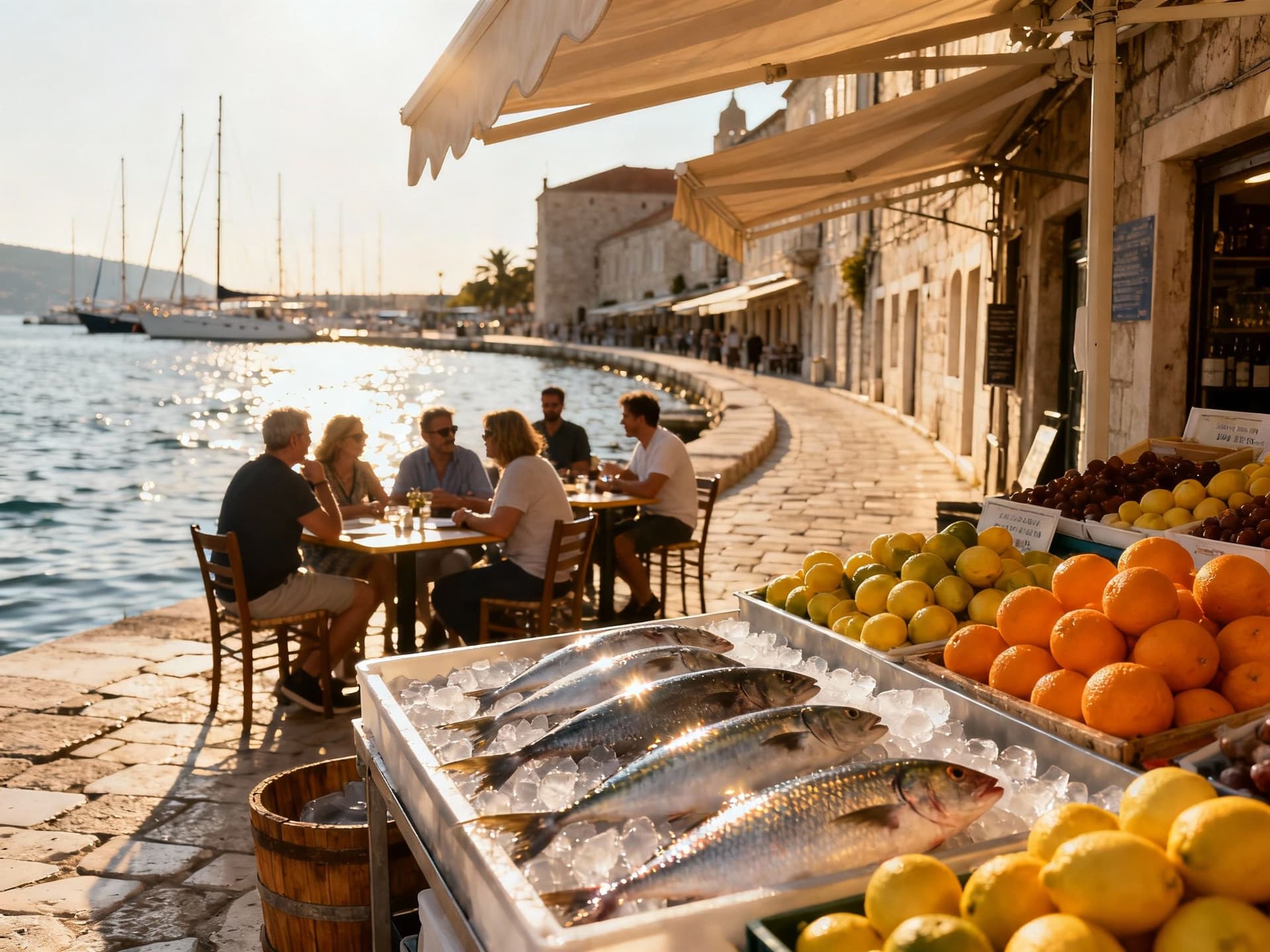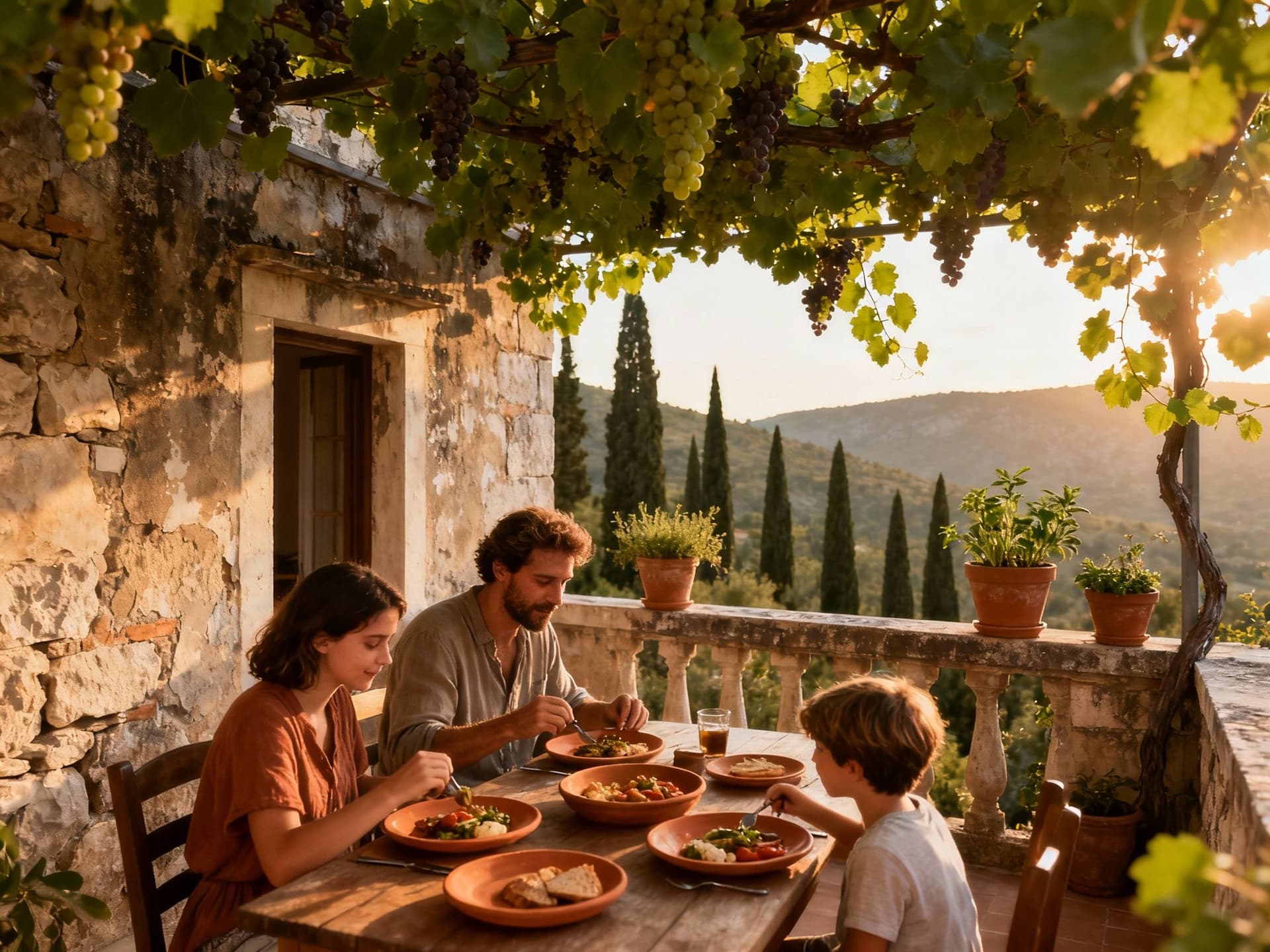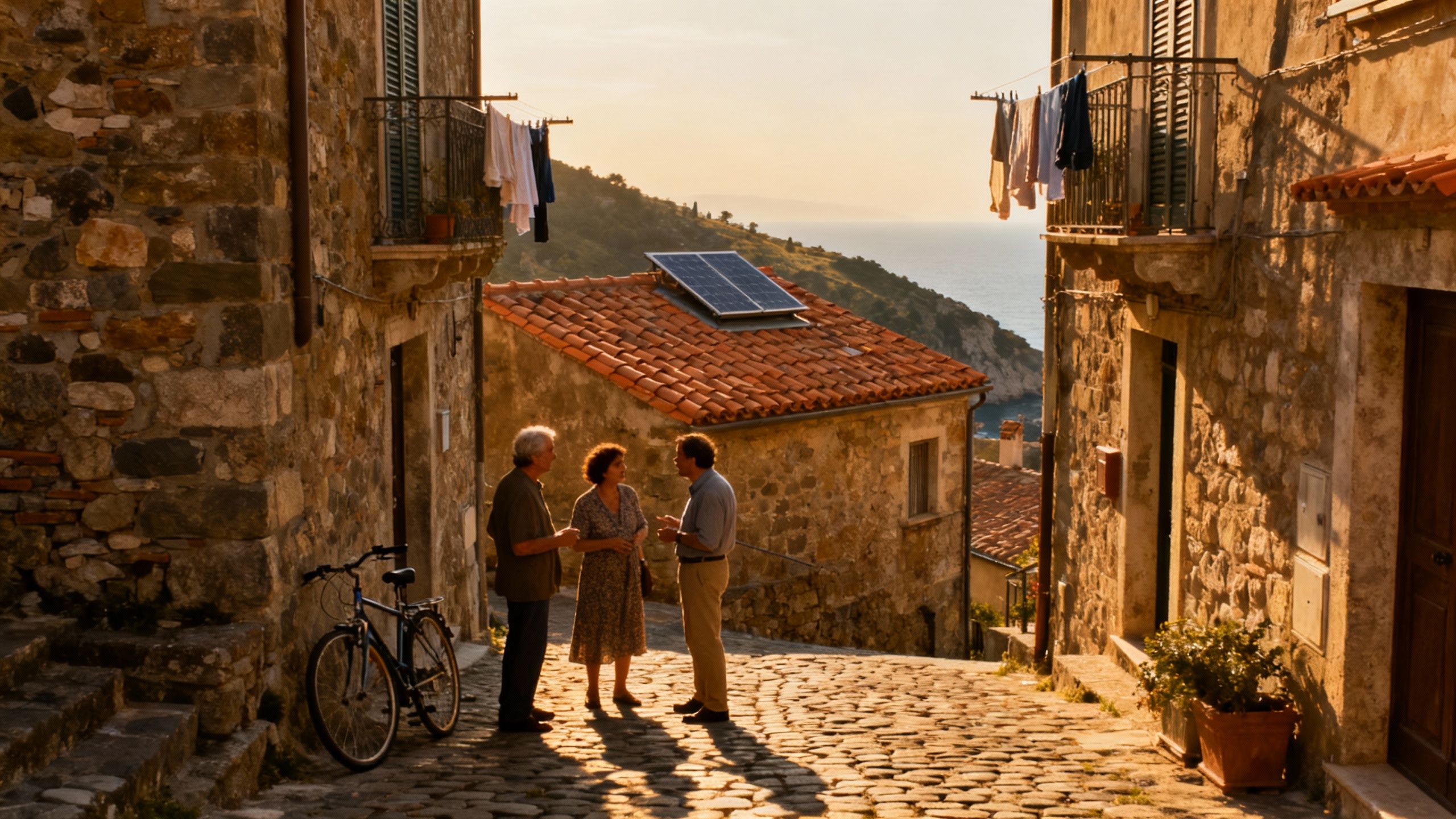Seasons, Stone & Reciprocity: A Croat Life‑First Buying Plan
Fall for Croatia’s seasons and stone houses — balance coastal light with off‑season reality, check reciprocity rules, and prioritise sustainable retrofits that protect comfort and value.
Imagine waking to the smell of espresso and pine, stepping out onto a narrow stone street in Split as fishermen mend nets and neighbours buy oranges at the morning market. Croatia moves in seasons — slow coastal summers of light and salted air, brisk inland winters scented with woodsmoke — and the houses here reflect that rhythm: thick stone walls that cool in July and retain warmth in January, terraces that live as extra rooms, and gardens that collect rain in cisterns. For international buyers who care about living lightly on the land, Croatia offers architecture, materials and a way of life that feels less like escape and more like return.
Living Croatian Days: smell, seasons, and neighbourhoods

Stroll the Diocletian-era alleys of Split at dawn, sip filter coffee at a sunlit table on Šetalište Ivana Meštrovića, then cross to the Riva for a boat to Brač. In Zagreb, leafy streets in Maksimir and the small cafés on Tkalčićeva offer winter culture and year-round farmer’s markets. On Istria’s hilltops — Grožnjan and Motovun — stone houses and truffle-scented kitchens meet a slow, craft-focused life. These are not abstractions; they are tangible neighborhoods where local rhythms dictate what kind of property makes sense: a courtyard house for slow summers, a well‑insulated stone villa for more temperate inland months, or a modern apartment for urban community life.
Coastal towns: morning markets and late‑night rivas
On the Adriatic, life centers around the water. In Dubrovnik’s quieter lanes off the Old Town, locals know which terraces catch the evening breeze; in Split’s Veli Varoš the community gathers at small konobas after the last ferry. If you picture daily swims, fish markets, and a piazza espresso, the coast delivers — but note: properties with sea views come with premiums, and the busiest summer months can mask maintenance and seasonal rental pressures.
Inland & Istria: craft, truffles and rural revival
Head inland and you’ll find terraced vineyards, truffle festivals, and villages where restoration of stone houses has become a small-language of sustainability — reused timber, lime plasters, and passive solar orientation. Istria’s hill towns and continental Croatia prize local produce and slow-season living; these places reward buyers looking to restore with natural materials and to foster biodiversity in small plots.
- Lifestyle highlights to try before you buy:
- Morning market run in Split (Pazar), espresso on Tkalčićeva in Zagreb, truffle hunt in Istria, evening swim from a pebble beach in Makarska, and an autumn grape harvest in Pelješac.
Making the move: practical choices that keep the lifestyle whole

Croatia’s housing market has been surprising: prices have risen across regions even as the number of purchases by foreigners has softened. Official house price indices show meaningful year‑on‑year increases into 2025, particularly for newly built dwellings and for pockets of coastal demand. That matters for timing and for how you weigh renovation projects versus new builds when aiming for low‑impact, sustainable living.
Property types that match an eco‑minded life
Stone village houses: thick walls, natural cooling and repairable materials — ideal for low‑energy retrofits. Seaside apartments: compact, community‑oriented, easier to maintain but often with tourism pressures. New sustainable builds: higher upfront cost but often include solar-ready roofs, rainwater capture or passive design. Choosing which fits your life means balancing maintenance capacity, desire for seclusion versus community, and whether you want to steward an old house or move into a low‑impact new home.
Work with local experts who care about place
- How local advisors preserve the lifestyle you came for:
- Match neighbourhood character to daily routines — not just price.
- Advise on reciprocity and Ministry approvals when needed, smoothing timelines for non‑EU buyers.
- Find restoration teams skilled in traditional materials (stone masonry, lime plasters) to protect embodied carbon and local craft.
Insider knowledge: what expats wish someone told them
A common reality check: summers are loud, but the quieter months reveal whether a place truly fits you. Many expats arrive enchanted by July’s festivals and forget to assess winter daylight, grocery access, or heating needs. Recent reporting shows a drop in foreign transactions even as prices climb, a reminder that the market is selective and seasonality reveals a property’s true character.
Cultural notes that shape daily life
Croatians value hospitality and a measured pace; introductions through neighbours or local shops open doors faster than formal invitations. While English is common in tourist areas, small villages prize basic Croatian phrases — learning them deepens connection and helps when sourcing materials or tradespeople for eco‑savvy renovations.
Longer view: stewardship, seasons and resale
Think of a Croatian property as a relationship with place. Prices have risen across regions into 2025, so buying with stewardship in mind — investing in insulation, solar readiness, and rainwater capture — can both reduce running costs and make a home more resilient and attractive to future buyers who care about sustainability.
- Quick red flags and small wins:
- Red flags: missing building permits for coastally sited structures, unclear access rights to terraces, or seasonal-only utilities.
- Small wins: a south-facing courtyard for passive solar heating, existing cisterns for water-saving gardens, and proximity to a year‑round market.
Practical next steps: spend time in the seasons you love; hire a local notary and a lawyer familiar with reciprocity requirements if you are a non‑EU buyer; request official house‑price data and ask your agent about comparable off‑season sales. These steps protect both the dream and the investment.
- A three-step starter plan:
- 1) Visit in two different seasons and stay in a neighbourhood you might buy into; notice shops, transport and noise patterns.
- 2) Have an agent introduce you to restoration teams and a lawyer who will check Ministry approval timelines (for non‑EU buyers) and building permits.
- 3) Prioritise small, high‑impact sustainability upgrades (insulation, solar pre‑wiring, rainwater storage) over cosmetic finishes — these shape comfort and long‑term costs.
Picture yourself six months in: you know the baker’s hours, the neighbour who will prune the olive tree, and the quiet bench that catches late sun. That daily intimacy is what buying in Croatia can offer when lifestyle leads the search. When you are ready, work with an agency that treats stewardship as part of the brief: find homes that breathe with the land, respect local craft, and let you live gently and richly in season.
Sources: Croatian Bureau of Statistics house price indices; legal commentary on foreign purchasing rules; market reporting on foreign sales trends and economic context. See links embedded above for direct data and current legal guidance.
Swedish advisor who left Stockholm for the Costa Brava in 2019. Specializes in sustainable, sea‑view homes for Scandinavian buyers and green finance insights.


